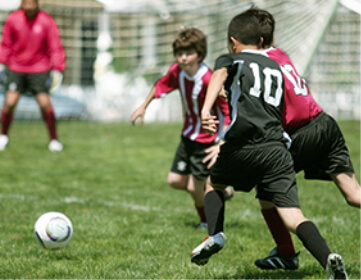Student-athletes put their body through a lot. Regardless of the sport, they’re putting excessive strain on their muscles, joints and tendons. There is also a risk of injury for any type of athlete. But even if you can’t completely eliminate the chance of getting hurt from playing a sport, you can find reassurance in knowing that sports rehab and physical therapy can get you right back into the game after an injury.
Sports rehab and physical therapy can help student-athletes heal from an injury and restore their body’s overall quality to improve their performance. But how? That’s what we’re here to answer.
Read on to learn about the basics of sports rehab and physical therapy for student-athletes, what sports rehab and physical therapy can treat, and common techniques that it might involve.
The basics of sports rehab and physical therapy
Sports rehab and physical therapy for student-athletes go hand in hand when it comes to an injury because they’re both incorporated into sports medicine. It’s also important to note that sports rehab is usually facilitated by a physical therapist. The goal is to use sports rehab techniques to help heal an injury, and then restore the athlete’s strength, flexibility and range of motion that may have been affected.
Sports rehabilitation helps an injury’s healing process by:
- Reducing pain.
- Increasing strength and flexibility.
- Restoring range of motion.
- Relearning sport-specific techniques.
- Reducing the risk of re-injury.
The physical therapy follows the sports rehabilitation and continues the recovery process by improving the student-athlete’s overall athletic performance and reducing the risk of future injury.
5 injuries that sports rehab and physical therapy can treat for student-athletes
There is no shortage of potential injuries that a student-athlete can sustain while playing, and the possibilities can vary from sport to sport. But there are many common injuries that can be treated with sports rehabilitation and physical therapy.
Five injuries that can be treated with sports rehab and physical therapy are:
- ACL tear — The anterior cruciate ligament, or the ACL, is located in the center of the knee and prevents the shinbone from sliding in front of the thighbone. This ligament can be torn while playing sports due to sudden twisting movements. An ACL tear can result in pain, instability and swelling. Physical therapy, post-surgical repair, is integral to a safe return to sport.
- Hamstring strain — Sometimes referred to as “pulling a hamstring,” a student-athlete can strain their hamstring, which is located in the back of the thigh. If the muscles are overloaded, they can stretch too far and even start to tear. It can range from Grade 1, a mild strain, to Grade 3, a complete tear.
- Shoulder injuries — As nearly every sport requires a lot of shoulder movements, student-athletes are no strangers to shoulder injuries. An injury to the shoulder can refer to a dislocation, sprain, or strain that’s usually caused by overuse or blunt trauma while playing.
- Concussion — If a student-athlete gets hit in the head by a ball or their head hits the ground with force during a fall or tackle, there’s a chance that they have sustained a concussion. A concussion is a traumatic brain injury that can cause a variety of symptoms, including headaches, memory loss and nausea.
- Ankle sprain — An ankle sprain can be caused by changes in direction, being hit or simply rolling the ankle and can be extremely painful. Physical therapy can help in reducing pain and restoring strength and stability in that area for return to sport.
3 common sports rehab and physical therapy techniques for student-athletes
A sports rehab and physical therapy treatment plan will be devised with exercises, modalities and manual therapy to help treat the injury. The physical therapist will determine what works best based on the student-athlete’s condition, the severity of their injury and their personal capabilities. The goal is to help with pain management as well as restore the student-athlete’s body’s overall function to increase their athletic performance after the injury heals.
Three common sports rehab and physical therapy techniques are:
- Exercises — One of the most effective ways to rehabilitate a sports injury is with strengthening and stretching exercises. A physical therapist will walk the patient through exercises to increase the strength and flexibility of the muscles, ligaments and tendons in the affected area. These exercises will also decrease the pressure placed on surrounding joints as well as the risk of future injury.
- Kinesiology taping — Depending on the injury/location, this can be used to provide stability, facilitate healing, or provide sensory feedback to encourage muscle activation.
- Manual therapy — Many sports injuries cause soft tissue to tighten up and cause pain as well as restrict movement. There are a variety of manual therapy techniques that involve a physical therapist using their hands to break up soft tissue and mobilize the patient’s joints. It helps alleviate pain and increases the affected area’s range of motion.
Advent PT can provide sports rehab and physical therapy for student-athletes
When a student-athlete gets injured, there is a fear that they won’t be able to play to their full potential even after the injury heals. But with the proper sports rehab and physical therapy, they can get right back onto the field. And that’s where we come in.
Contact our team today for more information or to schedule an initial appointment.
